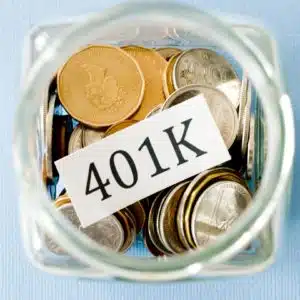One of the major disadvantages of annuities is that in their pure form, they provide no death benefit.
That is if you take an annuity when you are 65, with the idea that it will pay you an income for the next 20 years, but you die when you’re 70, the remaining value of the annuity will revert to the insurance company.
This may sound like an unfair trade-off, but in fact, it’s actually to balance out the opposite outcome. In the event that you deplete the funds in the annuity during your lifetime, the insurance company is legally bound to continue making income payments to you for the rest of your life.
But there is a way around that seemingly unfair arrangement (unfair if you die before the funds in the plan are completely exhausted). Most insurance companies now offer a death benefit on their annuities in the form of a refund or return of premium rider.
The addition of the rider means that at least some of the premium that you will have paid into the annuity will be paid out to your heirs in the event that you die before the annuity plan is fully exhausted.
What Is a Return of Premium Rider and How Does It Work?
You set up a return of premium rider in much the same way that you would a life insurance policy. You name one or more beneficiaries, and in the event of your death, that person (or people) will be entitled to receive the death benefit.
Now unlike a traditional life insurance policy, this type of death benefit is not a fixed amount of money. If you purchase a life insurance policy with a face value of $100,000, then your beneficiaries will receive $100,000 at the time of your death, regardless of when it occurs.
But with a return of premium rider, the death benefit works on a declining basis. That is, the longer that the annuity is in force, the lower the death benefit will be. That’s because the benefit paid out upon your death under this rider is a return of the invested premium only.
It works like this…
Let’s say that you purchase an annuity for $300,000, with the expectation that it will provide you with an annual income payment of $15,000 for the rest of your life.
But five years into the income payout phase you die. During the five years that you are alive, you collected $15,000 per year or $75,000 in total.
The insurance company will then pay $225,000 to your beneficiaries. That’s $300,000 for your investment in the annuity, less the $75,000 in income payments made to you. This is how it represents a refund of the premium, rather than a fixed death benefit.
It’s important to re-emphasize that the death benefit paid under a refund of premium rider is a declining benefit. That means that the longer the annuity is making income payments to you, the lower the death benefit will be.
So while the death benefit at the end of five years might be $225,000, it may fall to $150,000 if you die 10 years into the income payout period ($15,000 per year for 10 years). It’s even possible that after 20 years of receiving income payments, there will be no death benefit at all.
If you receive $15,000 per year for 20 years on a $300,000 annuity, the plan will be completely exhausted at the end of that time, and no death benefit will be paid.
That means that a refund of a premium rider is nowhere near as generous as a traditional life insurance policy. But it does offer some sort of death benefit connected with a major asset (the annuity) should you die during the early years of the income payout.
The specific amount of interest paid on the balance of the premium will be spelled out in the terms of the annuity rider itself.
The Benefits of a Return of Premium Rider
One of the major benefits of a return premium rider is that it provides you with both a living benefit and a death benefit in the same annuity plan.
The primary purpose of a basic annuity is to provide you with an income for life. This represents your living benefit, the income stream that will enable you to live once payments from the annuity begin.
However, as I mentioned at the very beginning of this article, annuities are set to terminate in the event of your death, even if that comes before the full value of the annuity contract has been paid out.
The return of premium rider is an option that adds a death benefit to the living benefits that an annuity provides.
You can enjoy the benefits of the income payments while you are alive, but should you die before the contract is fully paid out, then a return of the remaining premium will be paid to your beneficiaries.
That not only provides both a living benefit and a death benefit, but it also eliminates the need to purchase a separate life insurance policy, in addition to your annuity.
Another major benefit of a return of premium rider is that it will provide you (or more specifically, your heirs) with the ability to at least recover the net amount of the premium that you paid for the annuity.
It would basically guarantee that the full investment in the annuity will either come back to you – in the form of a living benefit – or to your heirs – as a death benefit. Heads you win, tails you win too!
The Cost of a Return of Premium Rider
The cost of a return of premium rider varies a lot from one insurance company to another. Much of the reason for this is that each company has its own set of features and benefits included in the rider.
In addition, the specific method for calculating the actual amount of the premium returned also varies between companies.
If you decide to add this rider to your premium, you can expect the annual cost of the rider to be somewhere between 0.25% and 1.50% of the amount of the premium.
So if your annuity is expected to provide an annual rate of return of 6.5%, and you add a return of premium rider at an annual cost of 0.75%, the net return on your annuity will drop to 5.75% per year (6.50% minus 0.75%).
Some insurance companies may also add an annual service charge for the return of premium riders. This can be anywhere from $50-$150 per year. However, on an annuity with a value of over $100,000, this charge will not have a material effect on the rate of return within your annuity.
Why You Might Want to Add a Return of Premium Rider to Your Annuity
A return of a premium rider is an option that you may want to consider under several different circumstances. The first might be where most of your assets are included in your annuity, and you would like to leave at least some of the money to your heirs after your death.
Adding the rider to your annuity may also be an excellent idea if you don’t have any other type of life insurance in force. And it would make even more sense if you have no other life insurance, and no other significant assets to pass along to your heirs.
If you have no heirs that you want to leave money to, then there’ll be no need to add the rider to the annuity.
Also, if you are in excellent health, and have a long history of people in your family living a lot longer than average, you might want to save the money that you will pay for the cost of the rider, and bet on outliving the premium that you paid for the annuity.
At that point, the insurance company will continue making income payments to you, out of their own assets.
Bottom Line: Return of Premium: Annuity Rider #6
Annuities are designed primarily for a sustained income in retirement. Yet, the challenge has been their lack of death benefits. The Return of Premium Rider presents a solution by ensuring beneficiaries receive the unpaid premiums in the event of the annuitant’s early death.
This provides both living and death benefits from a single financial tool, potentially eliminating the need for separate life insurance.
However, it’s essential to consider the costs associated, ranging from 0.25% to 1.50% of the premium. When legacy matters, this rider offers a balanced approach to ensure both income during life and a financial safety net after.







